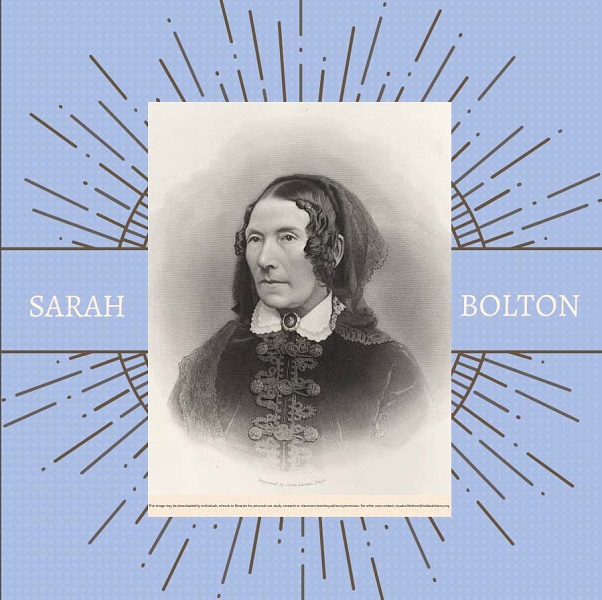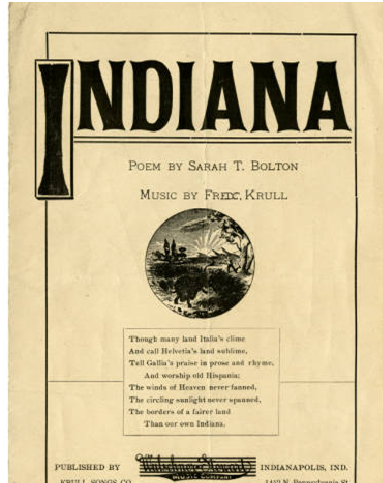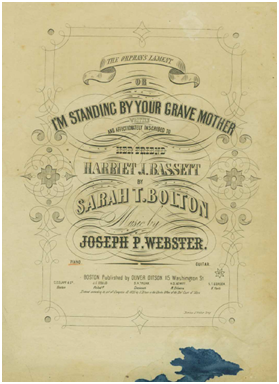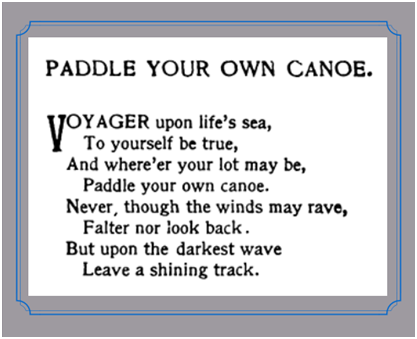Check out Part I to learn about Bill Garrett’s time on the Shelbyville High School basketball team, the “gentleman’s agreement,” and Garrett’s entry in Big Ten basketball. Or check out our podcast!
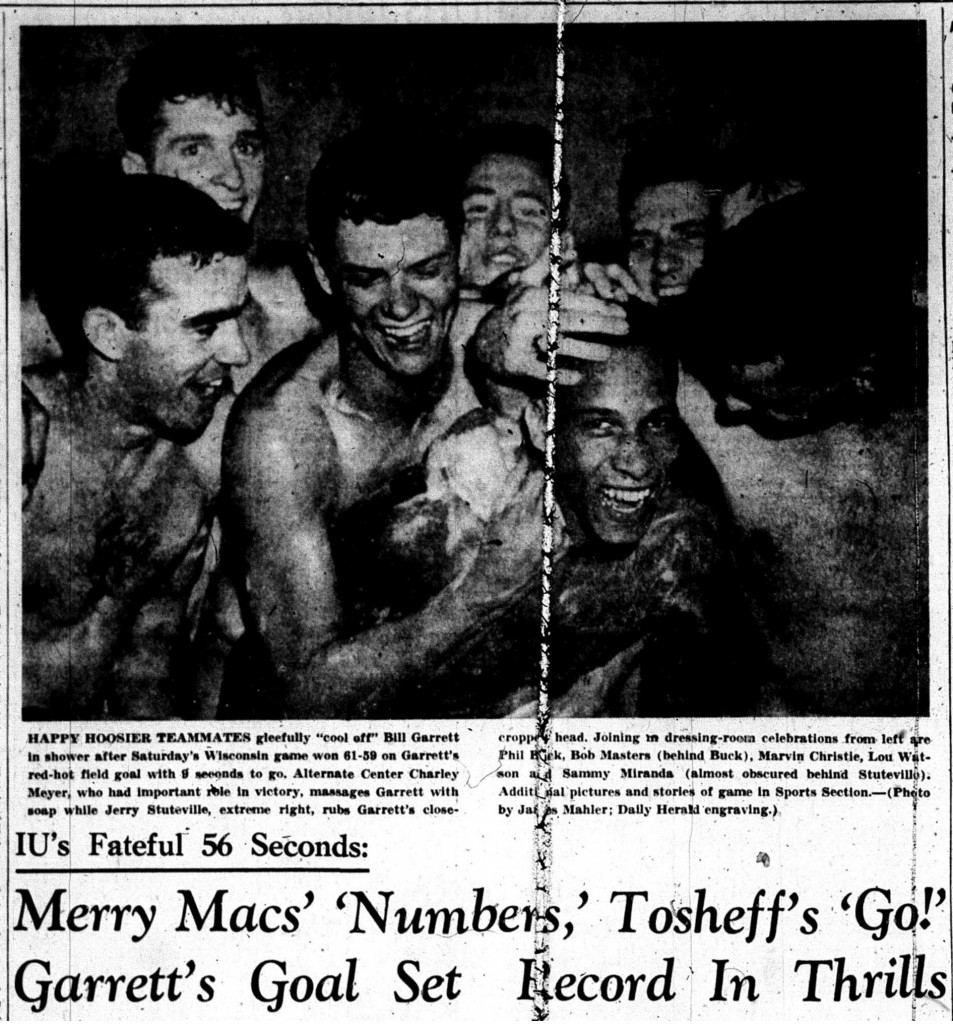
In an oral history interview in June 1970, Bill Garrett reflected on his early experiences at IU and on the school’s varsity basketball team. Garrett noted that “it was somewhat of an adjustment as far as the team players were concerned” and that it made things “rough at the start.” Despite encountering discrimination from some of the squad’s older players and while on the road for away games, Garrett quickly made a name for himself on IU’s team. In a February 1949 article, the Bloomington Daily Herald commended Garrett on his talent, and noted the positive impact that he and other young players were having on the team. By the end of the season, Garrett had tallied 220 points, the highest total on the squad that season. This success continued into his junior and senior years, with newspapers commenting on his speed and play-making ability. In a January 5, 1950 article, the Wisconsin State Journal reported:
Indiana’s attack is built around William Garrett, a lithe Negro who stands only 6-2 1/2 but plays offensive center. He is quick as a cat and has a devastating one-handed shot.
The following month, the Pittsburgh Courier, a leading African-American newspaper, referred to him as “the most spectacular member on the team coached by Branch McCracken.”
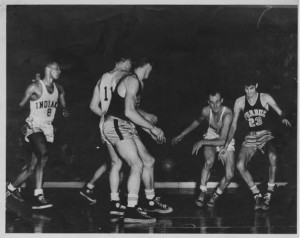
During Garrett’s time on the varsity basketball squad, the team’s record improved greatly. According to the Indiana Basketball Men’s Database, in the 1947-1948 season, the year before Garrett joined the team, IU won only eight games and lost twelve. The following season, Garrett’s first with the varsity squad, they improved to fourteen wins, and by his senior year (1950-1951), they went 19-3 and were ranked seventh in the nation.
Much of the team’s success during this period stemmed from Garrett’s talent on the court. On March 6, 1951, the Jasper Daily Herald reported that Garrett had broken IU’s four-year career scoring record with a total of 792 points in only three seasons of play. His 193 Big Ten points during the 1950-1951 season also broke the old record set in the 1946-1947 season.
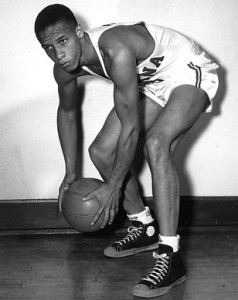
On February 24, 1951, the Indianapolis Recorder announced that Sporting News, a well-respected sports publication in the country, named Garrett to its All-American team. The Recorder quoted sportswriter Cy Kritzer in its February 24, 1951 issue regarding the selection. Kritzer remarked:
“Above all, he [Garrett] was a playmaker. The game has none better than the Hoosier star on the fast break.”
Just a few weeks later, the United Press named Garrett a second-team All-American. The All-American team was selected by a poll of the nation’s leading sportswriters and radio broadcasters. Garrett’s teammates also voted him Most Valuable Player of the season.
While at IU, Garrett was the only African American to play on a Big Ten varsity basketball team. On March 11, 1950, the Indianapolis Recorder published an article entitled “Bill Garrett Needs Company” in which it reported that Garrett was disappointed about being the only black basketball player in the conference. The article noted that in addition to Indiana University, DePauw, Earlham, and Anderson College all had African American students on their teams that season, and it encouraged Big Ten schools to follow their lead. However, by the following year, as Garrett’s final college basketball season was coming to an end, some feared that the Big Ten might revert to an all-white status again.
In their book Getting Open: The Unknown Story of Bill Garrett and the Integration of College Basketball, Tom Graham and Rachel Graham Cody note that African Americans John Codwell at the University of Michigan and Rickey Ayala at Michigan State were playing freshman basketball during Garrett’s senior year. At this time, freshman could not play on varsity teams except for the 1951-1952 season, which included an exception because the Korean War made it difficult to field a team.
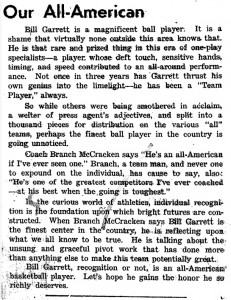
Although no African American players joined him at the varsity level before he graduated, Garrett’s example on and off the court helped create opportunities for others in the future. On March 6, 1951, with his college career winding down, the Indiana Daily Student ran an article on Garrett, noting the school body’s pride in him and how much he would be missed the next year. According to the paper, Garrett was “one fine model for a young athlete to pattern himself after.” At a time when segregation was still practiced in many areas of the state, and black athletes were still scarce in certain sports, this was saying a lot. It was a testament to both his talent and character, and again called into question why blacks should not be permitted to play Big Ten basketball.
Garrett graduated from IU with a Bachelor of Science degree in Physical Education in June 1951. In the season immediately following his graduation, at least seven black basketball players made Big Ten teams. On November 17, 1951, the Indianapolis Recorder reported that Ernie Hall had become the first African American basketball player at Purdue, and that Bob Jewell, who played at Crispus Attucks, made the University of Michigan’s team. In January 1952, the Recorder noted that in addition to Jewell, Michigan had two other African American players that season: Don Eaddy and Jonn Codwell. The paper traced this progress back to Bill Garrett, stating:
Following the path opened by Bill Garrett at Indiana University, sepia cagers are now making Big 10 and other leading teams in increasing numbers.
Likewise, the Capitol Times of Madison, Wisconsin also credited Garrett, noting that he was “the Jackie Robinson of the cage court” and that he had “blazed the way for others of his race in the college game this season.” Other African American players during the 1951-1952 year included Rickey Ayala at Michigan State, Walt Moore at Illinois, and Deacon Davis at Iowa. Notre Dame also challenged the color barrier at the school during this period, with African Americans Joe Bertrand and Entee Shine joining the Irish squad.
Though racial prejudice in sports did not end, black players continued to find success on Big Ten and other Midwest basketball teams.
On May 5, 1951, Bill Garrett was drafted by the Boston Celtics to play in the NBA. Though the league was still in its infancy, it was already attracting some of the best players from around the country. Again Garrett’s selection was a testament to his talent on the court. According to the Indianapolis Recorder, Garrett “found himself the only Negro among 86 stars who were drafted” to play professional basketball that year. However, Garrett would never get his opportunity to join the team. On August 25, 1951, the Indianapolis Recorder reported that he had been drafted into the U.S. Army. The Korean War (1950-1953) was already in full swing by this time, and Garrett was ordered to report for induction into the Army by September 7.
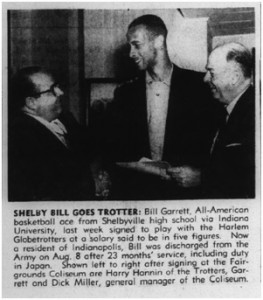
It is unclear when the Celtics released Garrett. According to a March 29, 1952 article in the Indianapolis Recorder, Garrett took his regular Army furlough with the Harlem Globetrotters in April of that year. One year later, on September 26, 1953, the Recorder reported that he was discharged from the Army and signed a contract to play with the Harlem Globetrotters. According to Tom Graham and Rachel Graham Cody, NBA teams limited the number of African American players on their rosters during this period and the Celtics already had two others.
Garrett played with the Globetrotters until 1955, when he decided to leave the team. According to his wife, Betty Garrett Inskeep, “he wasn’t happy playing for them. He was a very easygoing person, but he was competitive when you’re supposed to be competitive, so what the Globetrotters did did not suit him at all.”
Two years later, on July 13, 1957, the Indianapolis Recorder reported that Garrett had been hired to succeed Ray Crowe as head basketball coach at Crispus Attucks High School in Indianapolis. Garrett had his work cut out for him. Crowe had led the all-black high school to the state basketball title in 1955 and 1956.

In his first year on the job, Garrett helped the team win its sixth straight sectional crown. Just one year later, he coached Attucks to the state championship, again bringing glory to the school. The Indiana Sportswriters and Broadcasters Association named Garrett Coach of the Year soon after the tournament.
Garrett coached Attucks for ten years before assuming the position of athletic director at the school in 1968. In 1974, he was inducted into the Indiana Basketball Hall of Fame. Sadly, Garrett died of a heart attack just a few months later, on August 7, 1974, at the age of 45. He was assistant dean for student services at IUPUI at the time of his death.
Though his name is not as widely recognized as Jackie Robinson’s or other pioneers in race relations, Garrett’s influence and contributions in helping to diminish racial discrimination in both high school and college basketball in the mid-1900s should not be forgotten.
Be sure to follow IHB’s Facebook page for information on the upcoming dedication of a new state historical marker to commemorate Garrett and the integration of Big Ten basketball later this year.

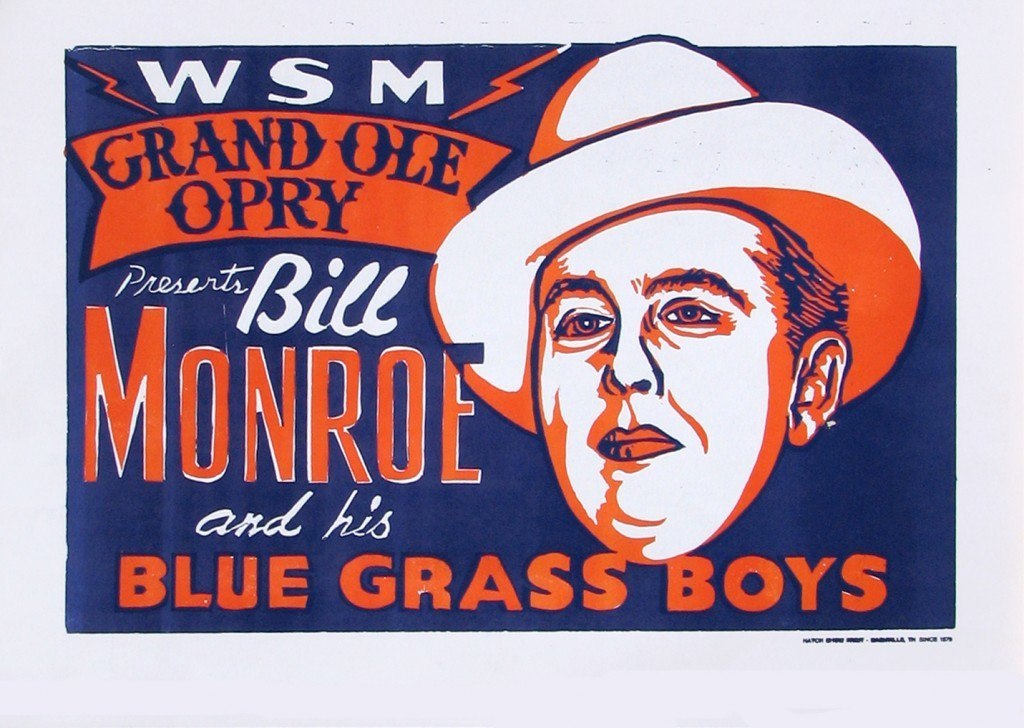
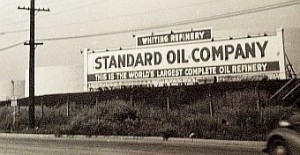
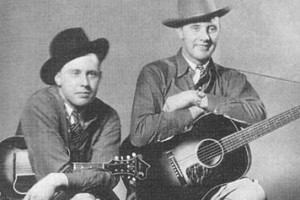
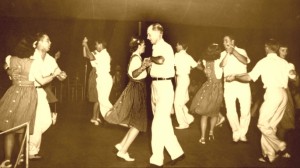

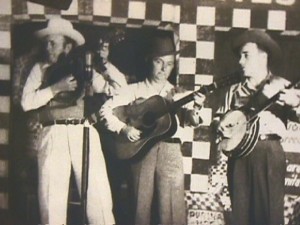
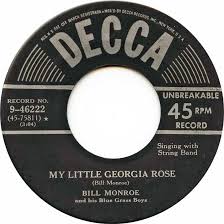
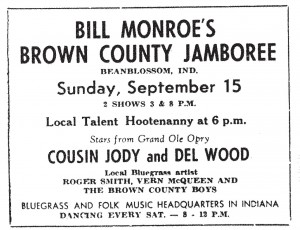
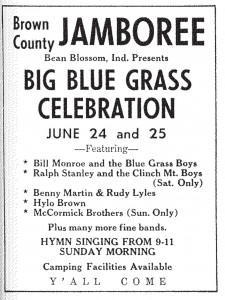
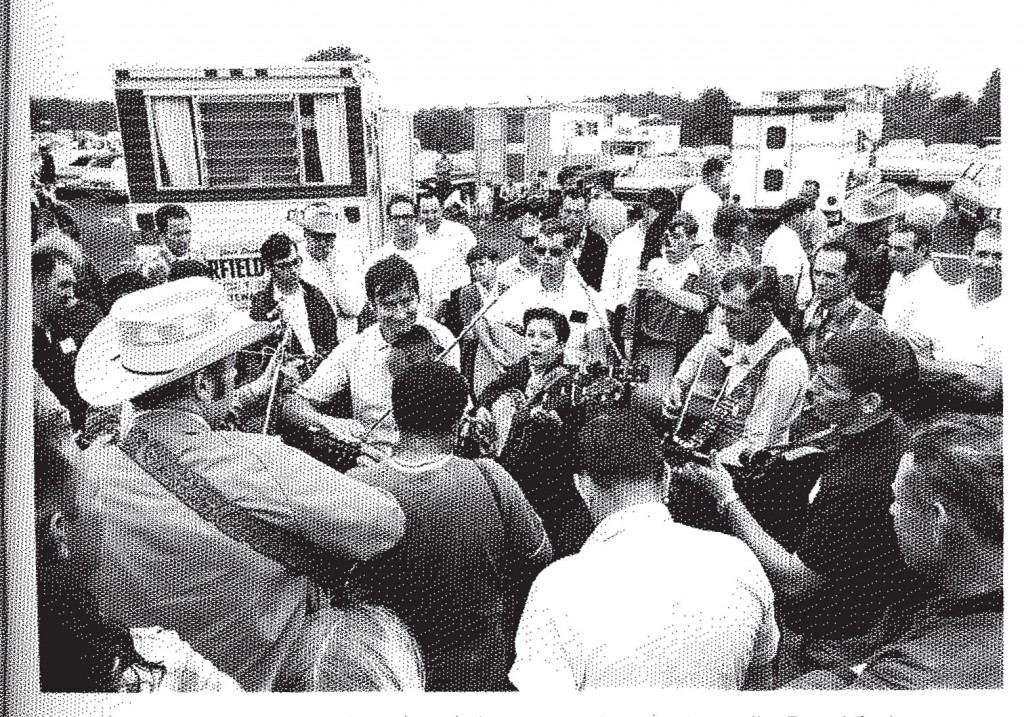

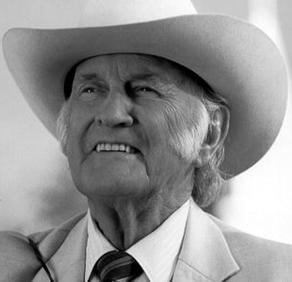

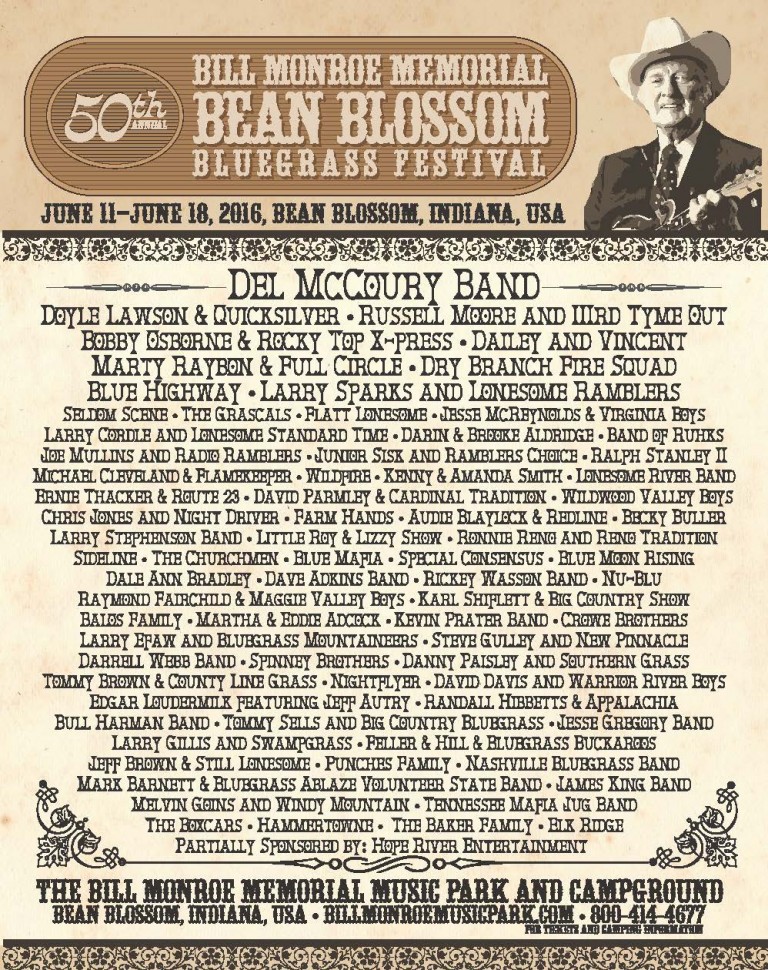
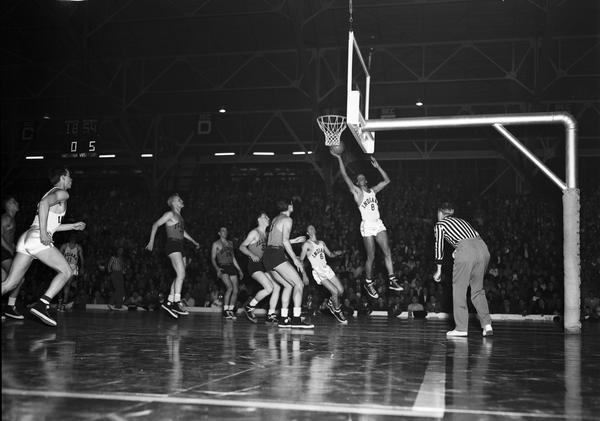
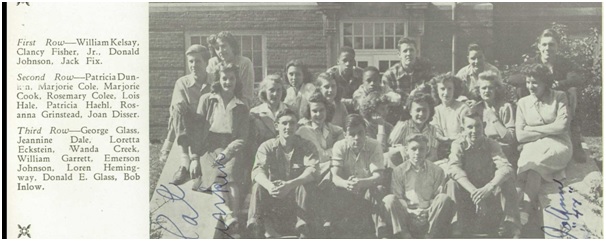
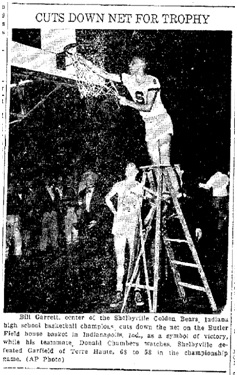
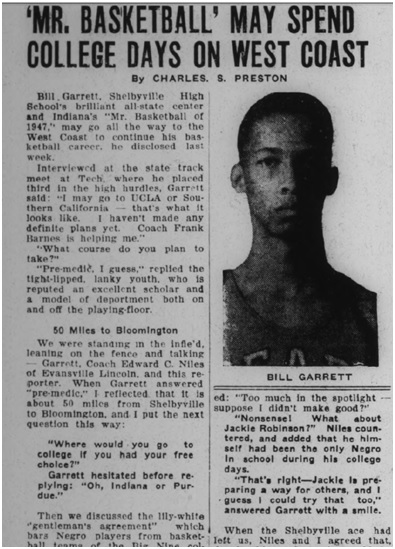
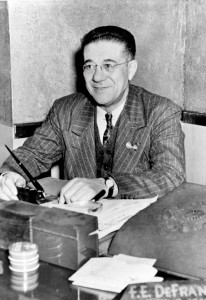
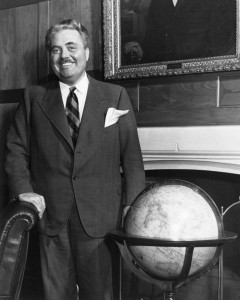
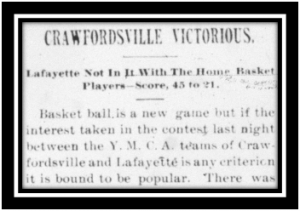
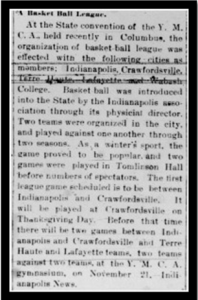
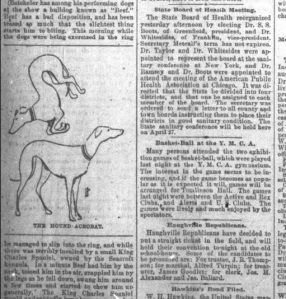
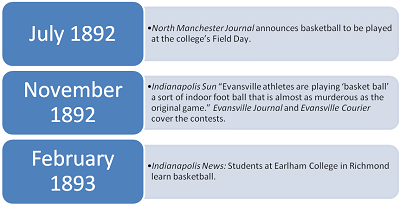



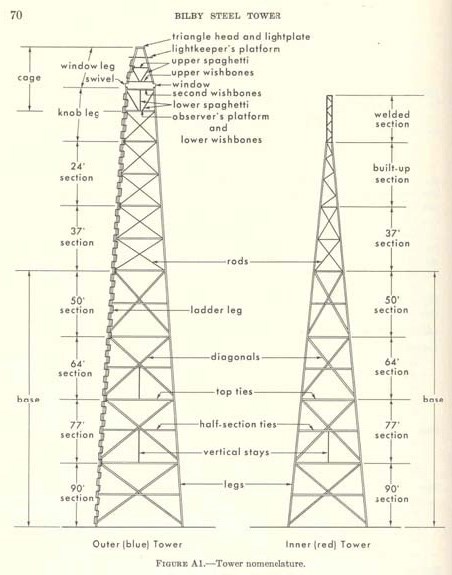
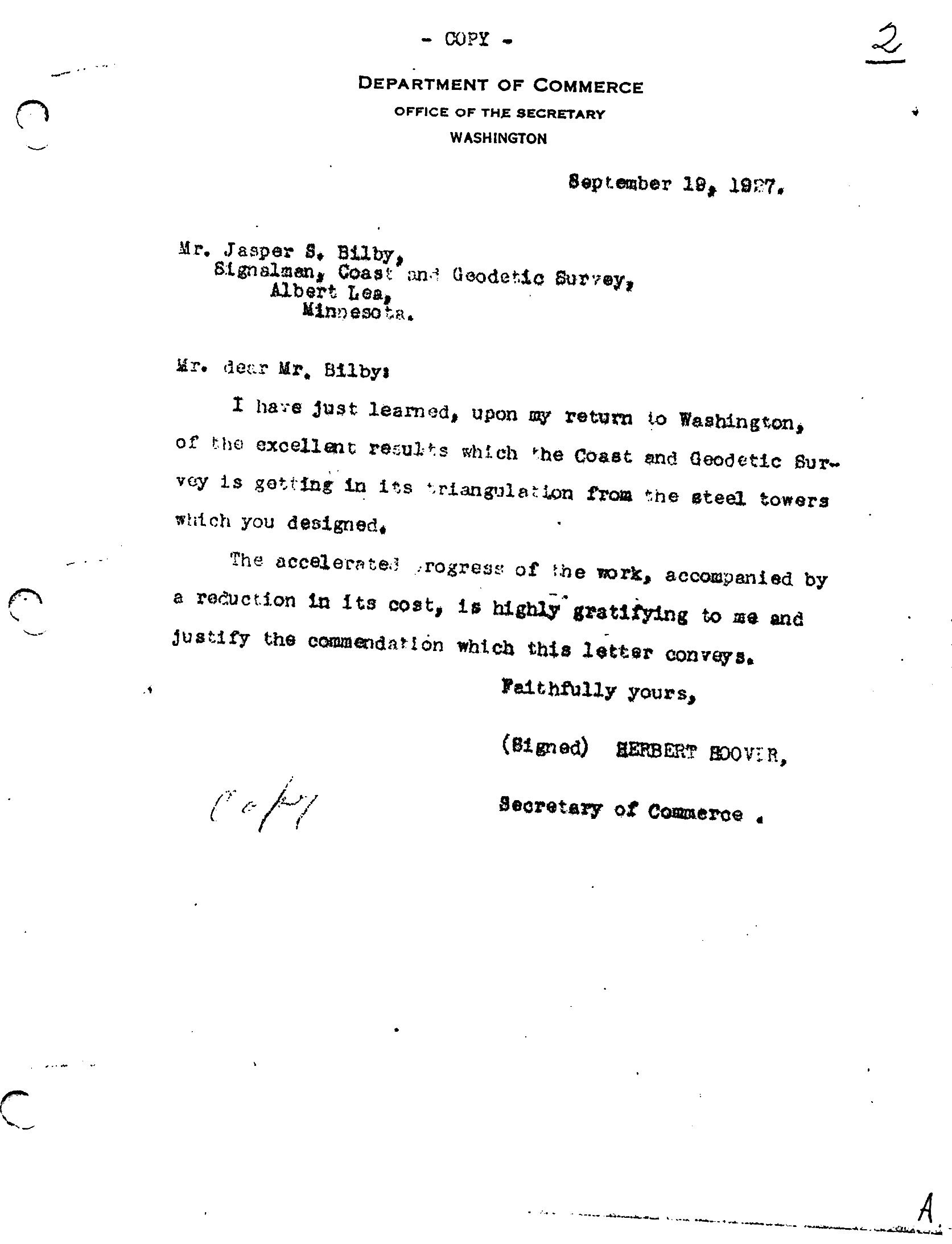
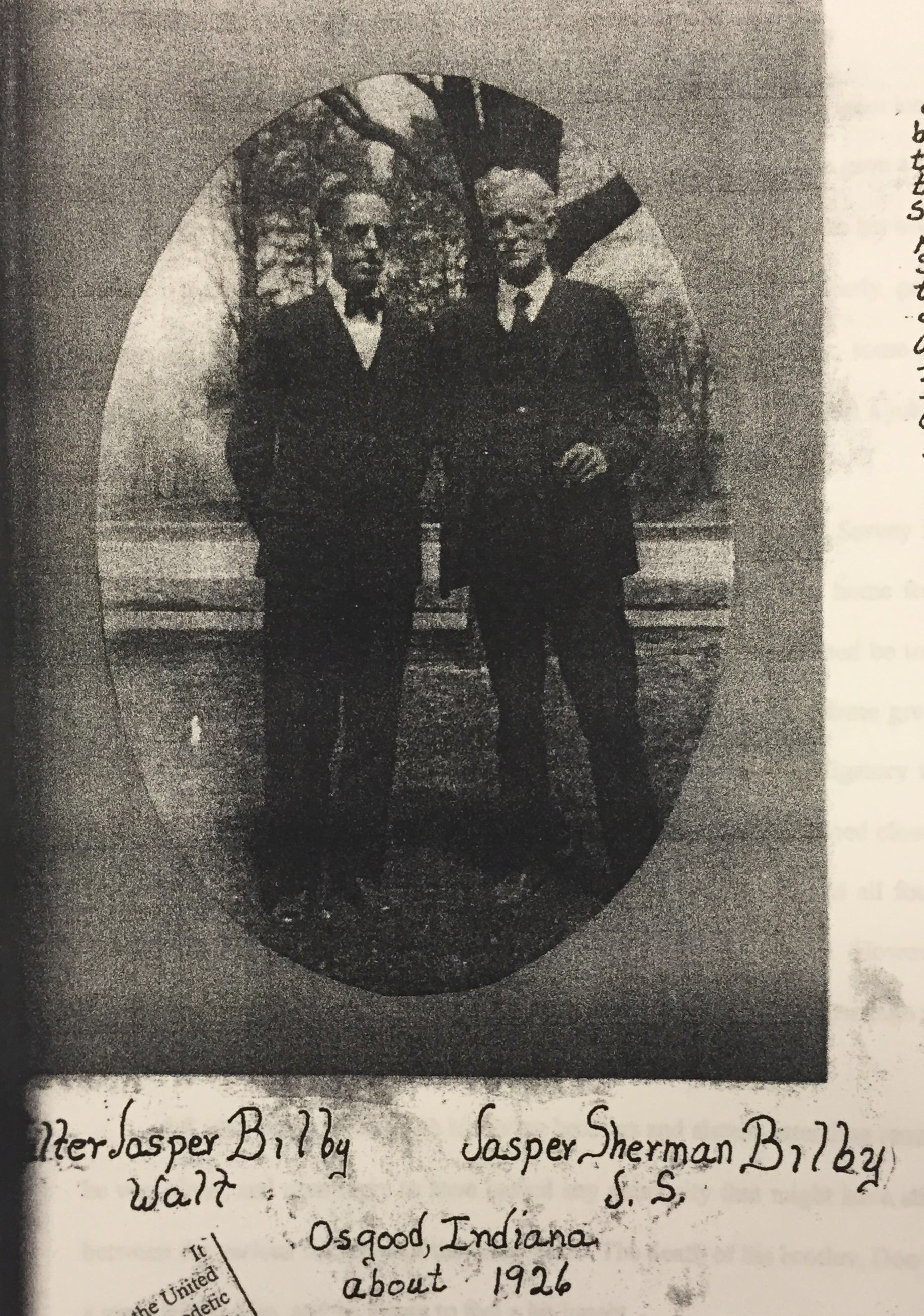

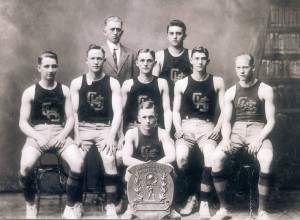
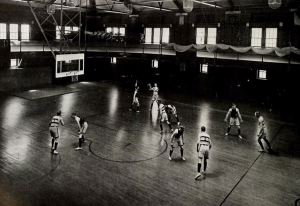
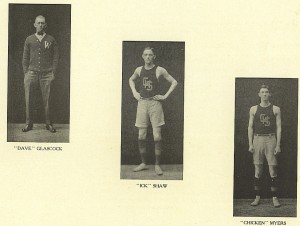
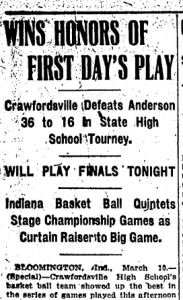
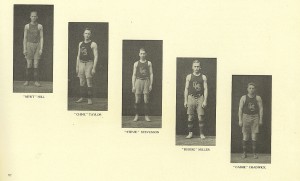

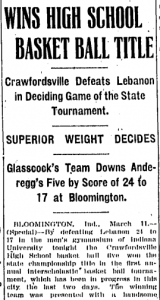
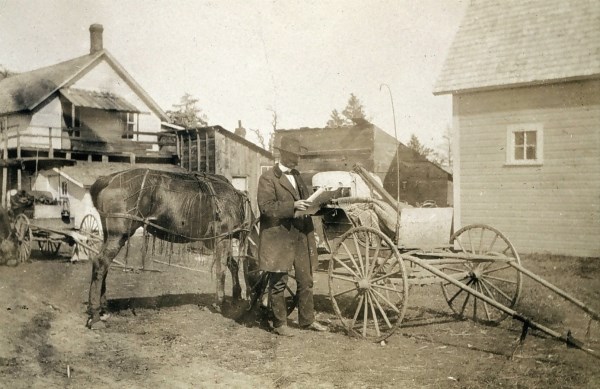
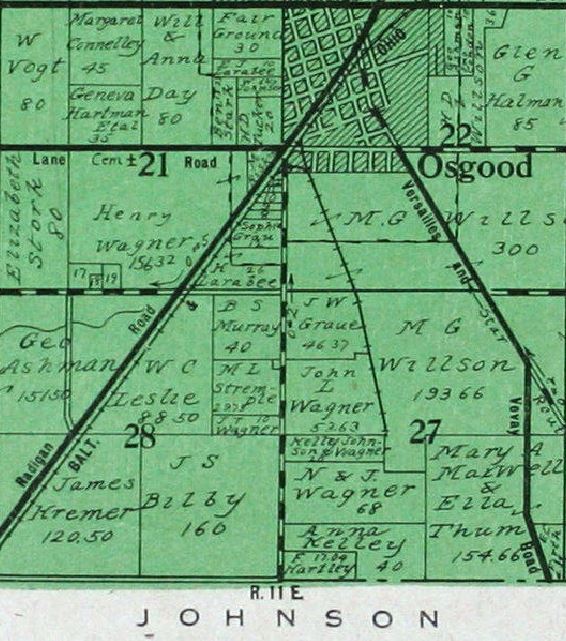

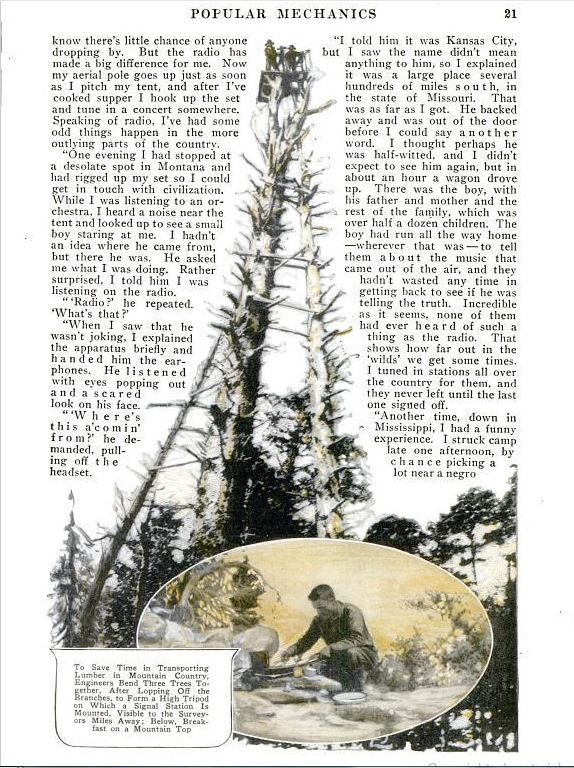
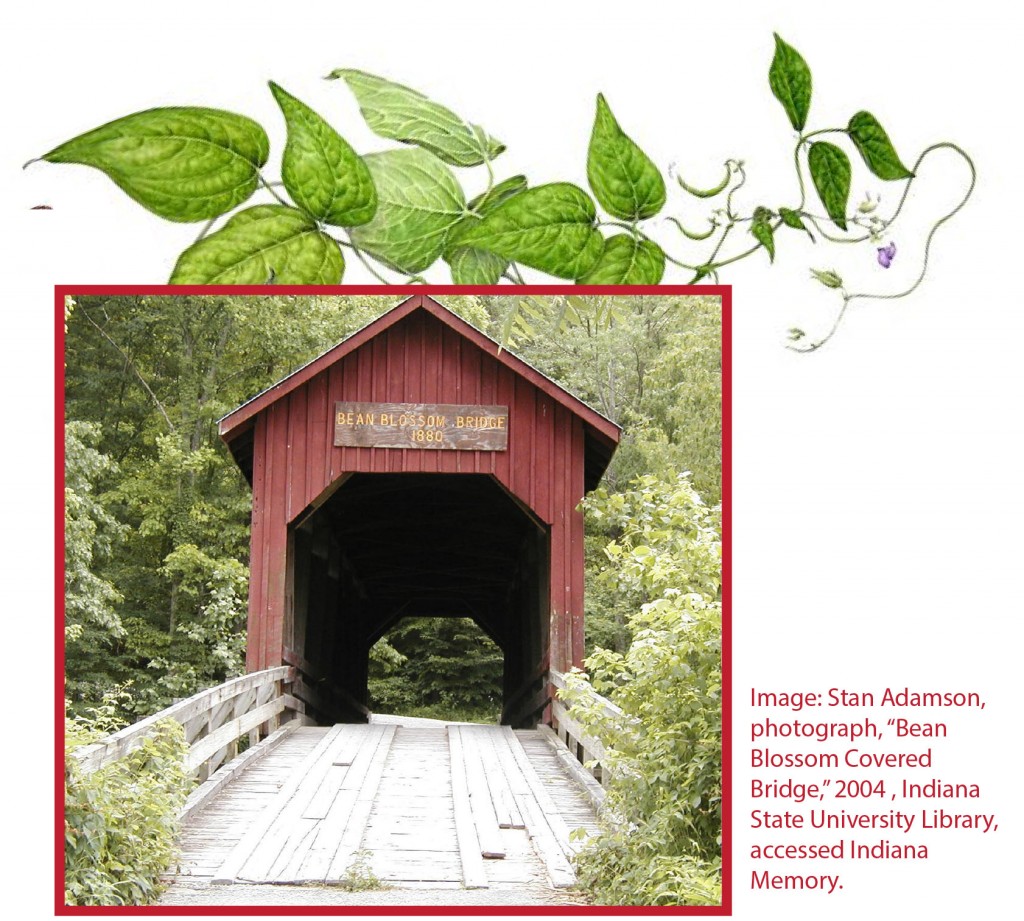
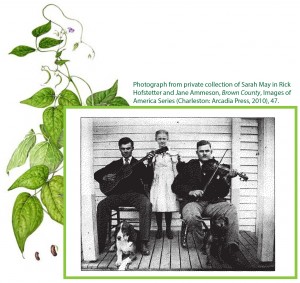
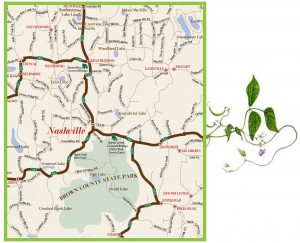

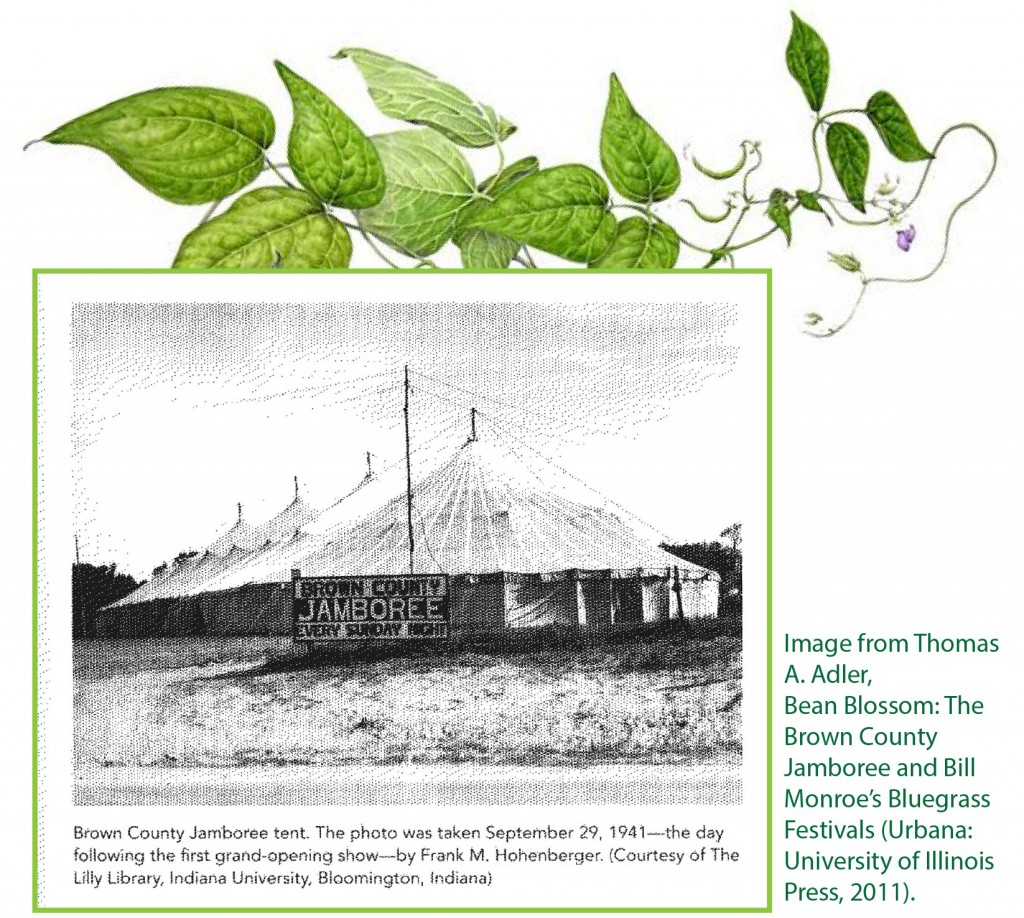 The “free” aspect of the free show didn’t last long, as the organizers couldn’t help but see how the crowd was growing. The lunchroom business was booming and there was no reason the promoters and performers shouldn’t make a little money too. They built a small stage, fenced in the area, and started to charge twenty five cents per show. Soon, they put up a tent as can be seen in the only known photograph of the Jamboree from this period.
The “free” aspect of the free show didn’t last long, as the organizers couldn’t help but see how the crowd was growing. The lunchroom business was booming and there was no reason the promoters and performers shouldn’t make a little money too. They built a small stage, fenced in the area, and started to charge twenty five cents per show. Soon, they put up a tent as can be seen in the only known photograph of the Jamboree from this period.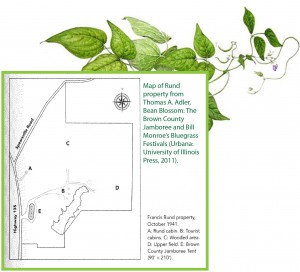 Just before the Jamboree launched, locals Francis and Mae Rund had been making improvements to their nearby property and building cabins with some sort of tourism-related business in mind as early as August 1940. By the summer of 1941, as the large crowds coming to the Jamboree were causing traffic and parking problems and more seating was needed at the outdoor venue, the Runds saw an opportunity to construct a permanent building (as opposed to a tent) so the programs could continue be held in the winter. Construction began in October. The barn-like building was funded by residents and was to seat 2,500 attendees. On October 23, 1941, the Brown County Democrat reported:
Just before the Jamboree launched, locals Francis and Mae Rund had been making improvements to their nearby property and building cabins with some sort of tourism-related business in mind as early as August 1940. By the summer of 1941, as the large crowds coming to the Jamboree were causing traffic and parking problems and more seating was needed at the outdoor venue, the Runds saw an opportunity to construct a permanent building (as opposed to a tent) so the programs could continue be held in the winter. Construction began in October. The barn-like building was funded by residents and was to seat 2,500 attendees. On October 23, 1941, the Brown County Democrat reported: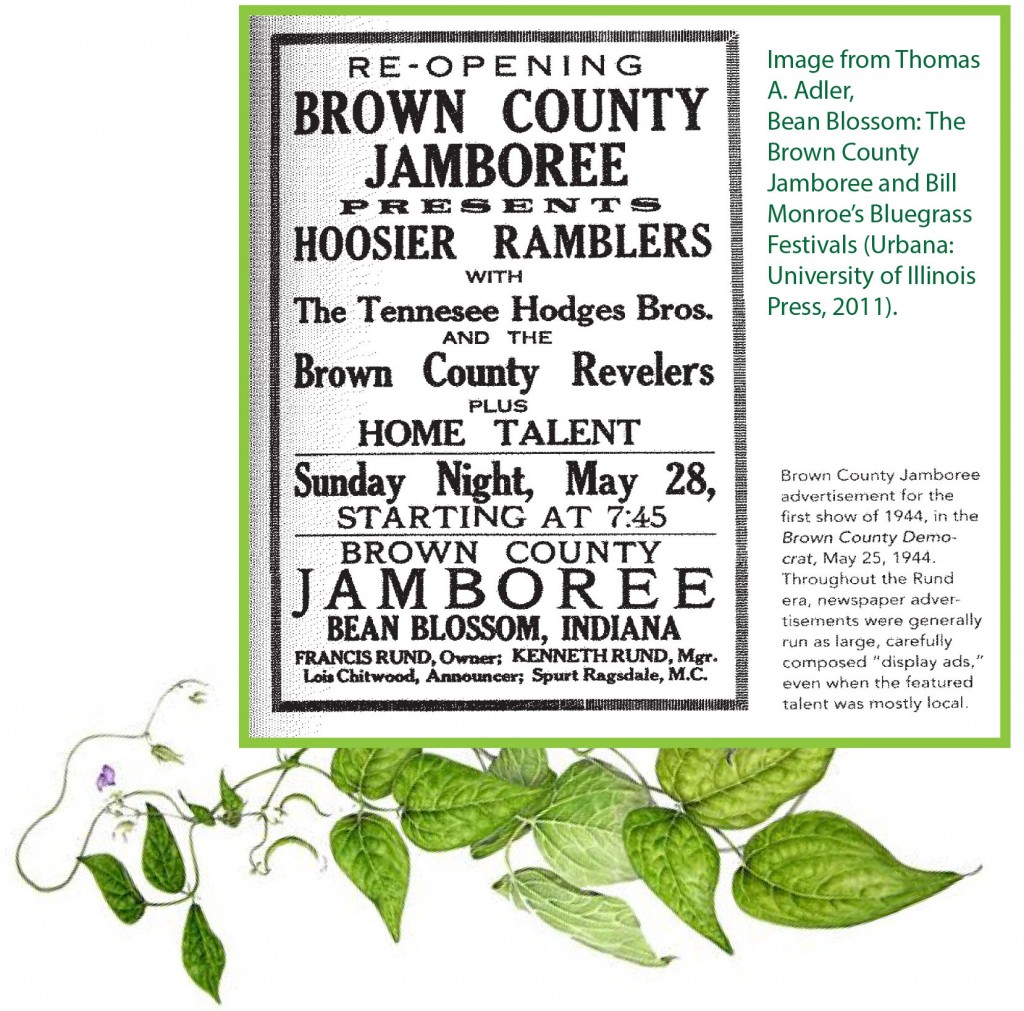 The shows during the Rund decade (1941-51) generally featured a variety show format hosted by an emcee which included comedic performers as well as music. However, the country and “hillbilly” music was always the main draw. Adler writes, “Brown County Jamboree shows were professional, fast paced, and entertaining. From the beginning, the music, comedy, and ambience of the site combined to present a nostalgic and entertaining whole.” The Indianapolis Star on August 10, 1941 described the Jamboree as “a co-operative program providing real, homespun talent, rail-fence variety of music and frivolity . . . old fiddlers and rural crooners, who would sing and warble Brown county ballads brought over the mountains by their pioneer ancestors.” The Indianapolis Times noted October 10, 1941 that in addition to “singing and dancing” the Jamboree included “vaudeville skits.” The Runds ran large advertisements for the Jamboree in the local newspaper and partnered with nearby radio stations, notably WIRE and WFBM, Indianapolis. On October 23, 1941, the Brown County Democrat reported that the Indianapolis radio station WIRE referenced the Jamboree many times during its programs.
The shows during the Rund decade (1941-51) generally featured a variety show format hosted by an emcee which included comedic performers as well as music. However, the country and “hillbilly” music was always the main draw. Adler writes, “Brown County Jamboree shows were professional, fast paced, and entertaining. From the beginning, the music, comedy, and ambience of the site combined to present a nostalgic and entertaining whole.” The Indianapolis Star on August 10, 1941 described the Jamboree as “a co-operative program providing real, homespun talent, rail-fence variety of music and frivolity . . . old fiddlers and rural crooners, who would sing and warble Brown county ballads brought over the mountains by their pioneer ancestors.” The Indianapolis Times noted October 10, 1941 that in addition to “singing and dancing” the Jamboree included “vaudeville skits.” The Runds ran large advertisements for the Jamboree in the local newspaper and partnered with nearby radio stations, notably WIRE and WFBM, Indianapolis. On October 23, 1941, the Brown County Democrat reported that the Indianapolis radio station WIRE referenced the Jamboree many times during its programs.